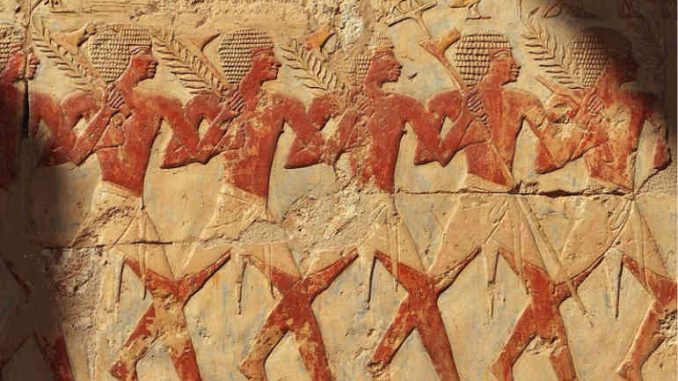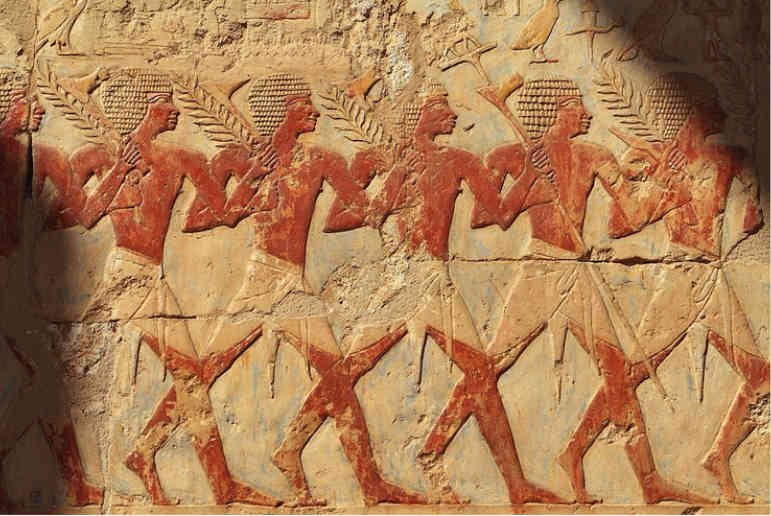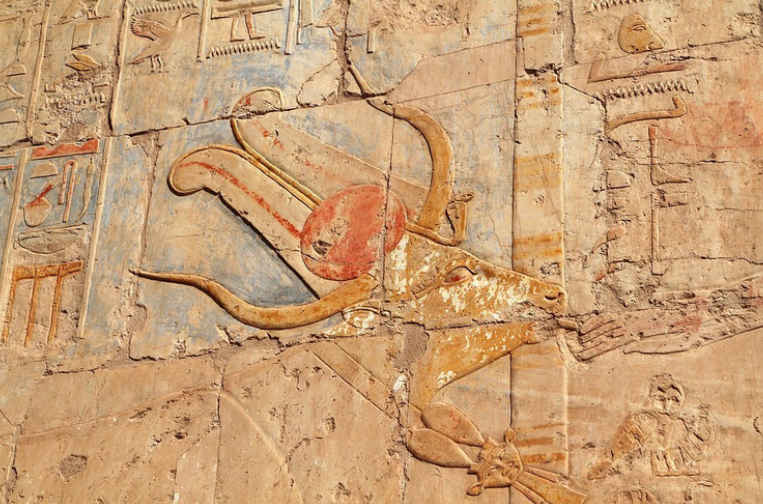
Get ready for an adventure of a lifetime as we embark on a journey to discover the wonders of Egypt’s ancient civilization. From the towering pyramids that have stood the test of time to the intricate tombs of the pharaohs, and the majestic temples dedicated to the gods, the Nile Valley is a treasure trove of ancient artifacts and hidden treasures waiting to be uncovered.
In this guide, we will be your personal tour guide as we take you on a fascinating journey through Egypt’s rich history and culture. You will discover the secrets of the pharaohs, the stories of the gods, and the incredible achievements of a civilization that still continues to amaze us to this day.

As we explore the ancient wonders of Egypt, you will witness the incredible engineering feats that created these timeless monuments, the intricate artwork that adorns them, and the fascinating stories that have been passed down through the generations.
Whether you’re a seasoned traveler or a history buff, this guide is your gateway to discovering the wonders of Egypt’s ancient civilization. Join us as we delve into the mysteries of this incredible land and unlock the secrets of the Nile Valley. Get ready to be amazed, inspired, and captivated by one of the greatest civilizations in human history.
Introduction to Egypt’s Ancient Civilization: Overview of the Pyramids, Temples, and Tombs of the Nile Valley
Egypt’s ancient civilization, one of the oldest in the world, is renowned for its monumental architecture, religious beliefs, and intricate burial practices. From the majestic pyramids of Giza to the exquisite temples of Luxor and Karnak, and the intricate tombs of the Valley of the Kings and Queens, Egypt’s ancient civilization continues to fascinate people from all over the world.
The Nile River, which flows through Egypt from south to north, was the lifeblood of the ancient civilization. The fertile land on its banks allowed the ancient Egyptians to develop a sophisticated agricultural system that sustained their civilization for over three thousand years. The Nile also provided a natural highway for trade and communication, allowing the different regions of Egypt to interact and exchange ideas.
In this guide, we will take a closer look at Egypt’s ancient civilization, with a particular focus on the pyramids, temples, and tombs of the Nile Valley. We will explore the historical context, architectural features, religious beliefs, and cultural significance of these ancient monuments, and provide practical tips and recommendations for visitors who wish to discover them for themselves.
Egypt’s Ancient Civilization: A Brief Historical Overview
Egypt’s ancient civilization emerged around 4000 BCE, in the predynastic period, when small communities in the Nile Valley began to settle down and cultivate crops. Over the next four thousand years, Egypt went through periods of political unification and fragmentation, foreign invasion and occupation, religious reform and revival, and artistic and intellectual achievement.
During the Old Kingdom period (2686-2181 BCE), the pharaohs of Egypt built the first pyramids, including the Great Pyramid of Giza, which remains the largest and most famous pyramid in the world. These pyramids were intended as monumental tombs for the pharaohs, who were believed to be divine beings with the power to control the forces of nature and ensure the prosperity and stability of the kingdom.
The Middle Kingdom period (2055-1650 BCE) saw the rise of a new religious and cultural movement that emphasized the importance of personal piety, moral behavior, and social justice. The pharaohs of this period built great temples and sponsored religious festivals that celebrated the god Osiris, the lord of the underworld and the patron of the dead.
The New Kingdom period (1550-1070 BCE) was a time of great power and wealth for Egypt, as its pharaohs conquered neighboring lands, established trade networks with distant countries, and built grandiose temples and tombs that showcased their divine status and cultural achievements. The reigns of pharaohs such as Hatshepsut, Akhenaten, and Tutankhamun have left a lasting legacy in the form of impressive monuments and exquisite art.
After the New Kingdom, Egypt went through a period of decline and instability, marked by foreign invasions, internal conflicts, and social upheaval. The last pharaoh of Egypt, Cleopatra, was defeated by the Romans in 30 BCE, and Egypt became a province of the Roman Empire. However, the ancient civilization of Egypt continued to influence art, literature, and philosophy throughout the Mediterranean world, and its monuments and artifacts continue to captivate the imagination of people to this day.
Discovering the Pyramids: A Guide to Egypt’s Most Famous Monuments
The pyramids of Egypt are perhaps the most iconic and recognizable symbols of its ancient civilization. These massive structures, built over a period of more than a thousand years, are among the largest and most impressive buildings in the world. They are also shrouded in mystery and intrigue, with many theories and legends surrounding their construction, purpose, and symbolism.
The Pyramids of Giza
The most famous pyramids of Egypt are located on the Giza plateau, near Cairo. The Giza pyramids were built during the Old Kingdom period, over a span of 85 years, from 2589 to 2504 BCE. The largest and most famous of these pyramids is the Great Pyramid of Khufu (also known as Cheops), which stands at a height of 147 meters and was the tallest man-made structure in the world for over 3,800 years.
The other two pyramids at Giza belong to Khufu’s son Khafre and grandson Menkaure, and are slightly smaller in size. The three pyramids are surrounded by smaller pyramids and mastabas (rectangular tombs), as well as temples, causeways, and other structures that were part of the royal funerary complex.
Visitors to the Giza pyramids can explore the interior of the Great Pyramid, which contains a complex network of passages, chambers, and galleries, as well as the burial chamber of Khufu. The interior of the other two pyramids is closed to visitors, but their exteriors can be admired from up close. The Sphinx, a massive statue of a lion with a human head, is also located near the pyramids and is a popular attraction.

Other Pyramids in Egypt
Although the Giza pyramids are the most famous, there are over 100 other pyramids in Egypt, built during different periods of its history. Some of the notable examples include:
- The Step Pyramid of Djoser, located in Saqqara, which was the first pyramid ever built and marked a new era in Egyptian architecture.
- The Bent Pyramid and Red Pyramid, located in Dahshur, which were built by Pharaoh Sneferu and represent an important transition from the earlier stepped pyramids to the more familiar smooth-sided pyramids.
- The Pyramid of Amenemhat III, located in Hawara, which is one of the few pyramids that still has some of its original limestone casing intact, giving an idea of what the pyramids would have looked like when they were first built.
Exploring the Temples of Egypt: A Journey through Religious Beliefs and Cultural Practices
The temples of Egypt were the centers of religious life and cultural activity, where the gods were worshipped, offerings were made, festivals were held, and knowledge was shared. These temples were also important political and economic institutions, controlled by the pharaohs and their priests, and supported by the labor of the common people.
The temples were built in various styles, reflecting the changing tastes and techniques of different periods. Some of the key features of Egyptian temples include:
- The pylon, a massive gateway flanked by towers, which served as the entrance to the temple and symbolized the boundary between the mortal world and the divine realm.
- The hypostyle hall, a large hall with rows of columns that supported the roof and created a sense of grandeur and awe.
- The sanctuary, a small room at the heart of the temple where the statue of the god was kept and where the most sacred rituals were performed.
Some of the notable temples in Egypt include:
- Karnak Temple, located in Luxor, which is the largest temple complex in Egypt and was dedicated to the god Amun. Karnak was built over a period of 2,000 years and contains a dazzling array of structures, including pylons, obelisks, statues, chapels, and halls.
- Luxor Temple, also located in Luxor, which was built by pharaohs such as Amenhotep III and Ramses II and was dedicated to the god Amun-Ra. Luxor Temple is known for its elegant design and well-preserved reliefs and sculptures.
- Abu Simbel Temple, located in Aswan, which was built by Ramses II and consists of two massive rock-cut temples dedicated to Ramses himself and his favorite wife Nefertari. Abu Simbel is famous for its colossal statues, intricate carvings, and impressive engineering.
Visitors to the temples of Egypt can marvel at the skill and artistry of the ancient Egyptians, as well as learn about their beliefs and practices. Many of the temples also offer spectacular light and sound shows that bring the history and mythology of Egypt to life.
Read: Celebrating the Eid al-Fitr Festival in Morocco: A Journey through Food, Culture, and Tradition
Exploring the Tombs of Egypt: Unraveling the Secrets of the Afterlife
The tombs of Egypt were the final resting places of the pharaohs and their families, as well as the nobles and officials who served them. These tombs were not only places of burial, but also served as shrines to the gods and as representations of the pharaoh’s power and status.
The tombs were decorated with intricate paintings and carvings that depicted scenes from the pharaoh’s life and from mythology, as well as spells and prayers intended to ensure the deceased’s safe passage to the afterlife. Many of these tombs were also filled with treasures and offerings, including furniture, jewelry, food, and wine.
Some of the most famous tombs in Egypt include:
- The Valley of the Kings, located near Luxor, which was the main burial site of the pharaohs of the New Kingdom period. The Valley of the Kings contains over 60 tombs, including those of Tutankhamun, Ramses II, and Hatshepsut.
- The Valley of the Queens, also located near Luxor, which was the burial site of the wives and children of the pharaohs. The Valley of the Queens contains over 80 tombs, including those of Nefertari and Titi.
- The Tombs of the Nobles, located in Thebes and Aswan, which were the burial sites of the nobles and officials who served the pharaohs. The Tombs of the Nobles contain a wealth of information about the daily life and beliefs of the ancient Egyptians.
Visitors to the tombs of Egypt can experience the awe-inspiring beauty and complexity of these ancient works of art, as well as gain insights into the beliefs and practices of one of the world’s oldest civilizations.
Egypt’s Ancient Civilization: A Legacy that Continues to Inspire
In conclusion, Egypt’s ancient civilization continues to captivate and inspire people around the world, with its monumental architecture, exquisite art, and profound spirituality. Whether you are a seasoned traveler or a curious beginner, Egypt offers a wealth of opportunities to explore and discover this fascinating world.
By visiting the pyramids, temples, and tombs of Egypt, you can immerse yourself in a rich and vibrant culture that has left an indelible mark on human history. You can witness the enduring legacy of the pharaohs and their people, and gain a deeper understanding of the timeless themes of life, death, and rebirth that continue to resonate with us today.
Whether you are marveling at the sheer size and precision of the Great Pyramid of Khufu, or gazing at the serene beauty of the Temple of Luxor, or contemplating the mysteries of the afterlife in the Valley of the Kings, you are sure to be moved and inspired by the wonders of Egypt’s ancient civilization.